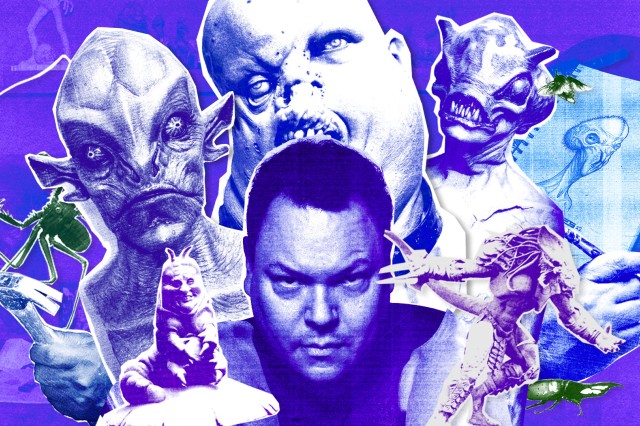
STORY
Carlyle Nuera | Lead Designer, Barbie Signature
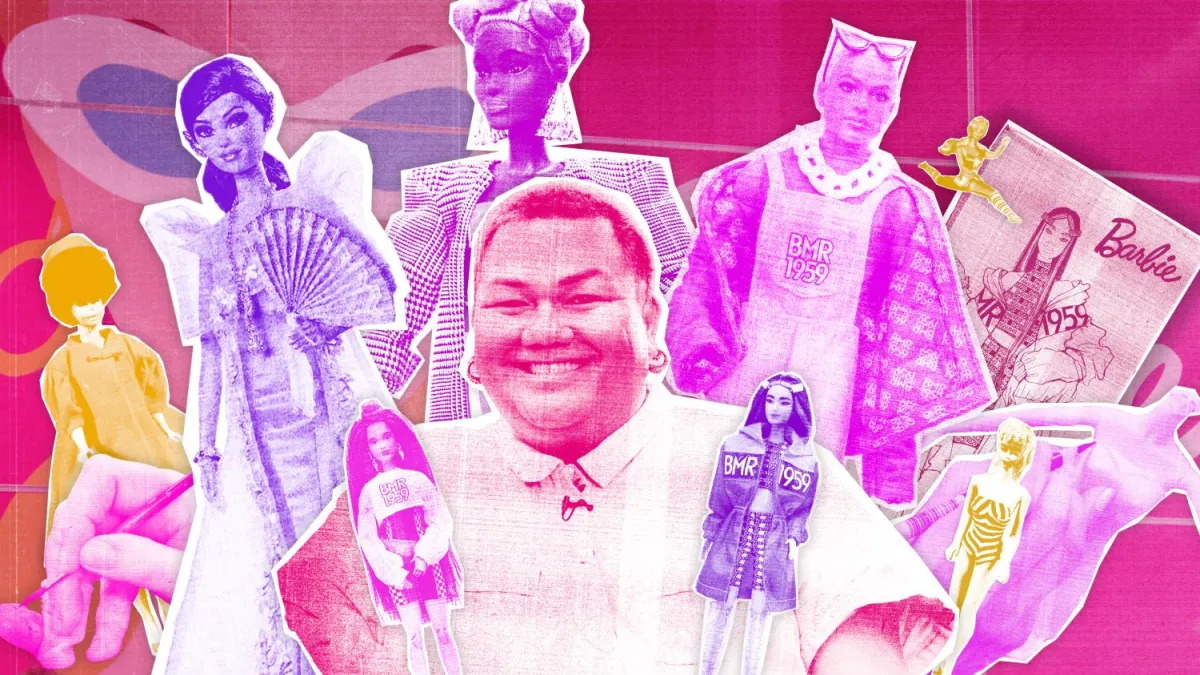
Carlyle Nuera, Barbie Signature Lead Designer, exemplifies the brand's motto–you can be anything. Nuera played with Barbie and Ken dolls as a young boy, designed clothes, staged mini fashion shoots, engaged in endless play, and then land the Barbie dream job working for Mattel straight out of art school.
Nuera was born and raised in Granada Hills, California, a suburb of the San Fernando Valley, by Filipino parents and, for the past twelve years, has been designing an incredible array of Barbies that bring diversity and representation to the Barbie line. His designs for the iconic brand are inspired by his culture, pop culture, and daily life. His designs showcase how the Barbie brand is committed to continuing to reflect better the world we see today.
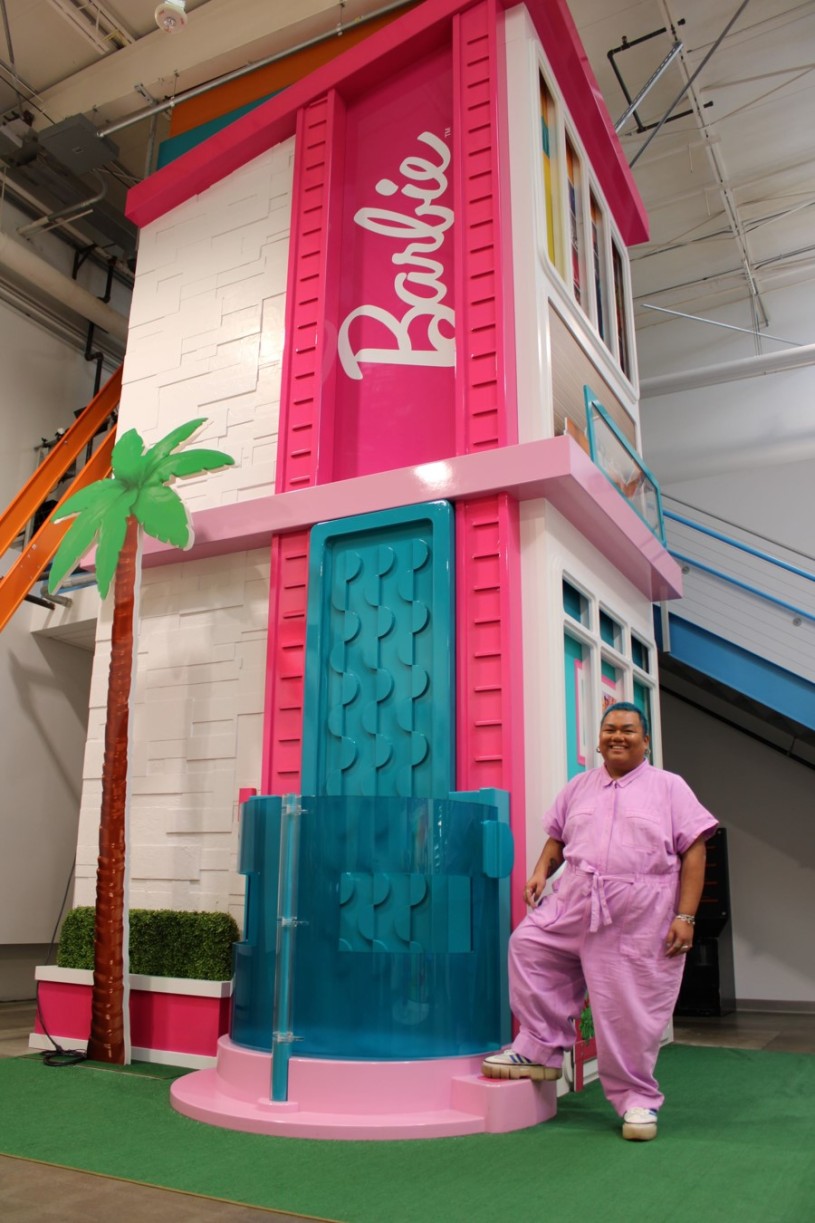
Designing Barbie and creating Barbie, it's a different kind of captivation because I realize what I'm doing is for other people to enjoy–collectors and kids. So, I see Barbie as a vehicle to bring joy and representation to other people. For me, the ultimate compliment as a designer is when somebody feels seen and represented by a Barbie that I designed.
Carlyle Nuera
Nuera sat down with us and shared his personal connection to L.A. as a self-proclaimed “valley girl,” how culture inspires his designs, and how he views Barbie as a vehicle to bring joy and representation to others. Click here or on the video link above to enter the world of a quintessential California girl and her inspired designer.
Explore more of Nuera's designs–from sketches to fabrication, the Mattel team places incredible intentionality and care into each doll.
Natural History Museum of Los Angeles County
From sketch to fabrication, Nuera considers the aesthetic of the doll, detailing the hair, makeup, and fashion.
Natural History Museum of Los Angeles County
Key Lead Hair Designer Shirley Fujisaki intricately sews each strand onto the Barbie head, blending in different shades of hair and brushing strands for the designed hairstyle.
Natural History Museum of Los Angeles County
Natural History Museum of Los Angeles County
Sasha Stoyan-Lopez, Key Lead Face Designer, carefully paints the eyes, eyebrows, and lip design onto the Barbie.
Natural History Museum of Los Angeles County
Nini Tun, Lead Pattern Maker, carefully cuts, lines, and shapes the fabric in line with the sketch design.
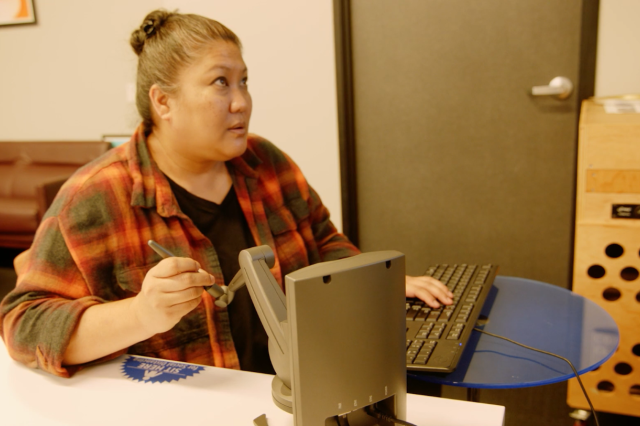
Courtesy of Mattel
Kittaya Wongchinda is a Staff Sculptor at Mattel and works with designers to sculpt the look and expression of Barbie.
1 of 1
From sketch to fabrication, Nuera considers the aesthetic of the doll, detailing the hair, makeup, and fashion.
Natural History Museum of Los Angeles County
Key Lead Hair Designer Shirley Fujisaki intricately sews each strand onto the Barbie head, blending in different shades of hair and brushing strands for the designed hairstyle.
Natural History Museum of Los Angeles County
Natural History Museum of Los Angeles County
Sasha Stoyan-Lopez, Key Lead Face Designer, carefully paints the eyes, eyebrows, and lip design onto the Barbie.
Natural History Museum of Los Angeles County
Nini Tun, Lead Pattern Maker, carefully cuts, lines, and shapes the fabric in line with the sketch design.
Natural History Museum of Los Angeles County
Kittaya Wongchinda is a Staff Sculptor at Mattel and works with designers to sculpt the look and expression of Barbie.
Courtesy of Mattel
The BMR1959 series was designed by Nuera and are the initials of Barbie's name, Barbie Millicent Roberts. 1959 was the year that Barbie debuted in New York at the American Toy Fair.
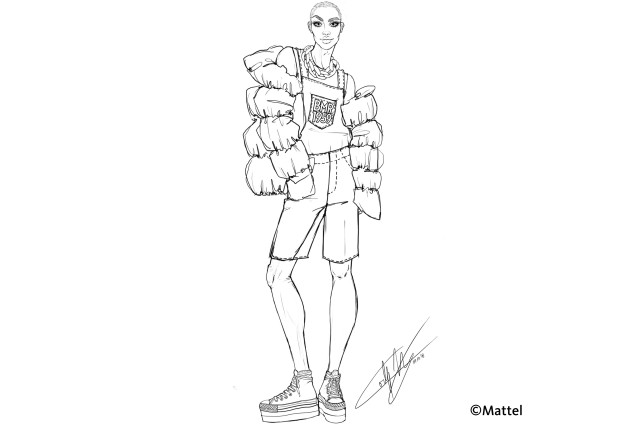
Courtesy of Carlyle Nuera, Mattel
Courtesty of Carlyle Nuera, Mattel
This Ken doll from the BMR1959 series is the first Ken doll to have full makeup and nail polish.
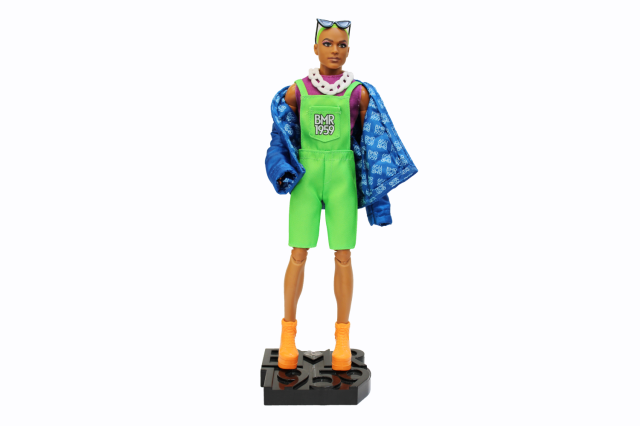
Courtesy of Carlyle Nuera, Mattel
From design to fabrication, the BMR1959 aims to celebrate fashion, diversity, and elevate representation.
Courtesy of Carlyle Nuera, Mattel
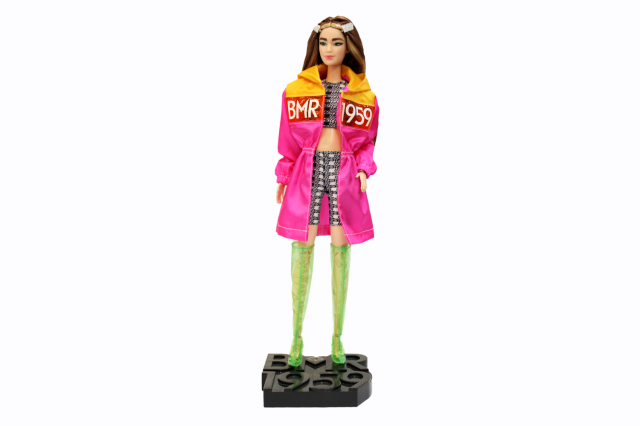
Courtesy of Carlyle Nuera, Mattel
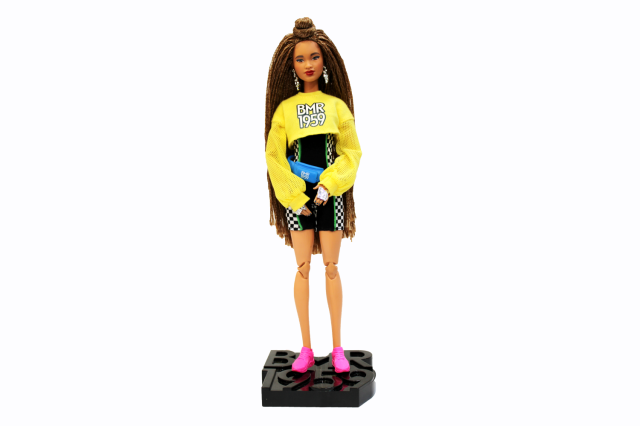
Courtesy of Carlyle Nuera, Mattel
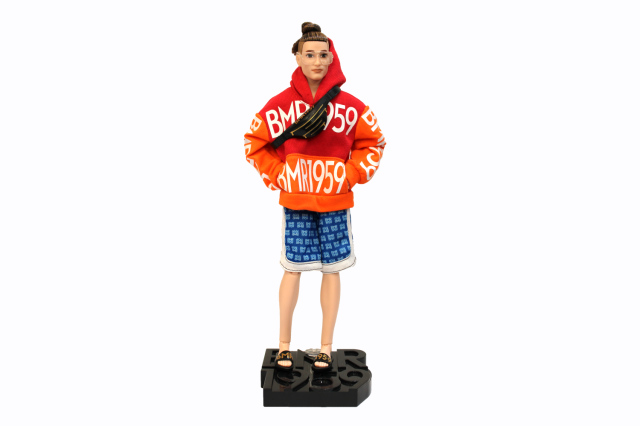
Courtesy of Carlyle Nuera, Mattel
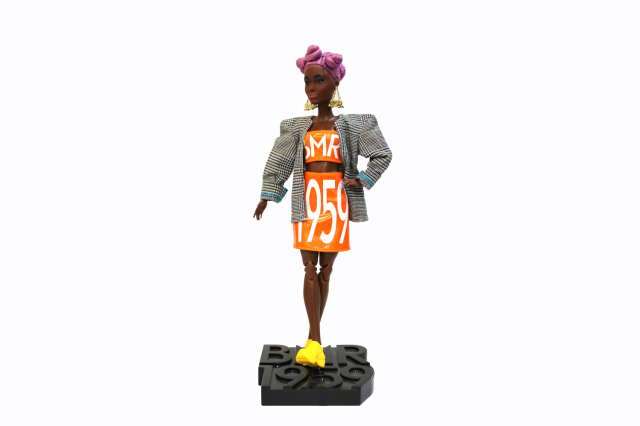
Courtesy of Carlyle Nuera, Mattel
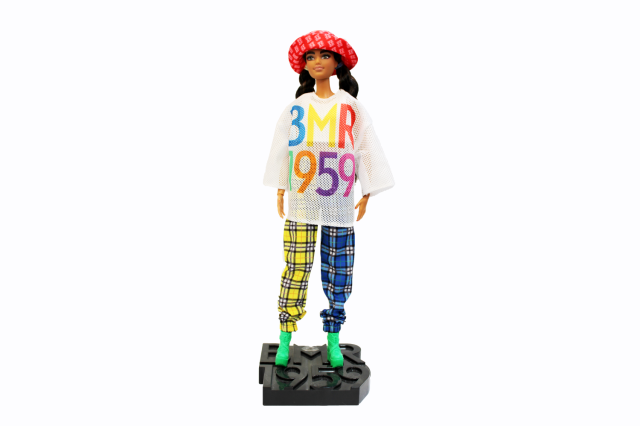
Courtesy of Carlyle Nuera, Mattel
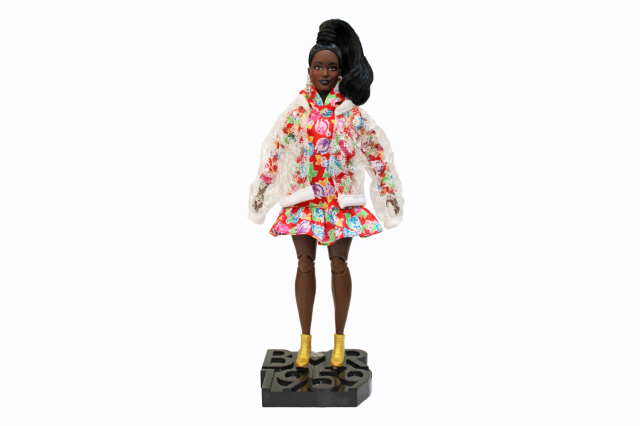
Courtesy of Carlyle Nuera, Mattel
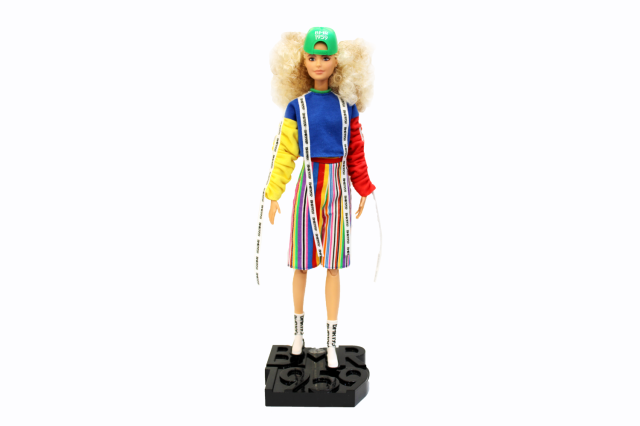
Courtesy of Carlyle Nuera, Mattel
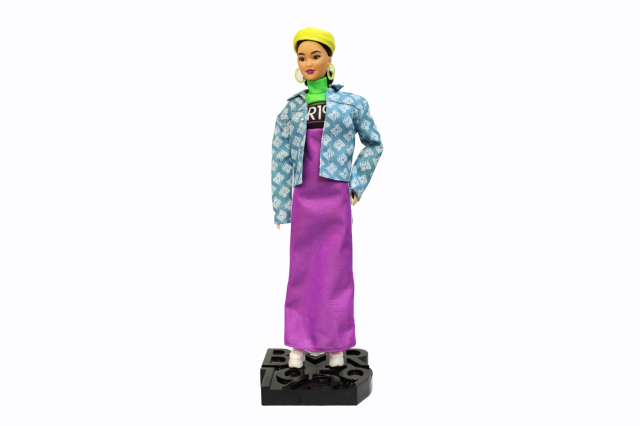
Courtesy of Carlyle Nuera, Mattel
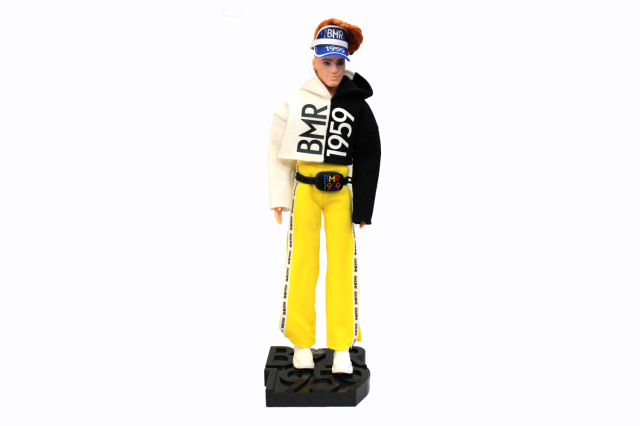
Courtesy of Carlyle Nuera, Mattel
1 of 1
Courtesy of Carlyle Nuera, Mattel
This Ken doll from the BMR1959 series is the first Ken doll to have full makeup and nail polish.
Courtesty of Carlyle Nuera, Mattel
From design to fabrication, the BMR1959 aims to celebrate fashion, diversity, and elevate representation.
Courtesy of Carlyle Nuera, Mattel
Courtesy of Carlyle Nuera, Mattel
Courtesy of Carlyle Nuera, Mattel
Courtesy of Carlyle Nuera, Mattel
Courtesy of Carlyle Nuera, Mattel
Courtesy of Carlyle Nuera, Mattel
Courtesy of Carlyle Nuera, Mattel
Courtesy of Carlyle Nuera, Mattel
Courtesy of Carlyle Nuera, Mattel
Courtesy of Carlyle Nuera, Mattel
Courtesy of Carlyle Nuera, Mattel
Mutya Barbie, designed by Nuera, is a Philippine Barbie dressed in an organza terno with classic butterfly sleeves. In the video linked above, Nuera reflects that he was inspired by his mother and her dress when she competed and won the title of Miss Tacloban in the Philippines in 1976. Culture, fashion, and family brought this Barbie together.
Courtesy of Carlyle Nuera, Mattel
Nuera brought his own cultural heritage as a Filipino-American into the design of Mutya Barbie. Mutya is a Filipina girl's name and can mean muse or pearl.
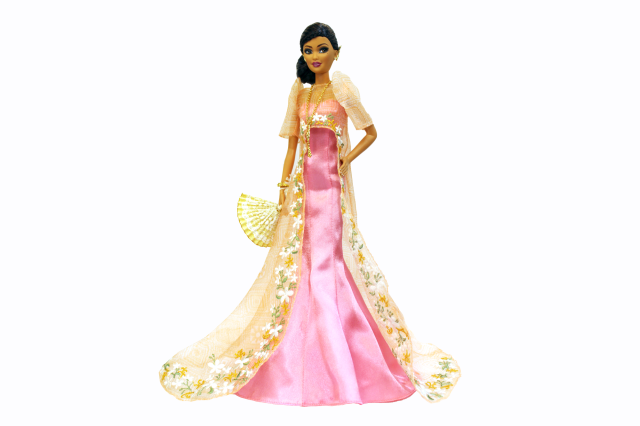
Courtesy of Carlyle Nuera, Mattel
Natural History Museum of Los Angeles County
"You can see a print on the organza has a sun. That is the sun from the flag of the Philippines. I added any kind of detail or opportunity to imbue Filipinoness into this doll." - Carlyle Nuera.
Natural History Museum of Los Angeles County
The sampaguita, a jasmine flower, the national flower of the Philippines, inspired the gown's hem on Mutya Barbie.
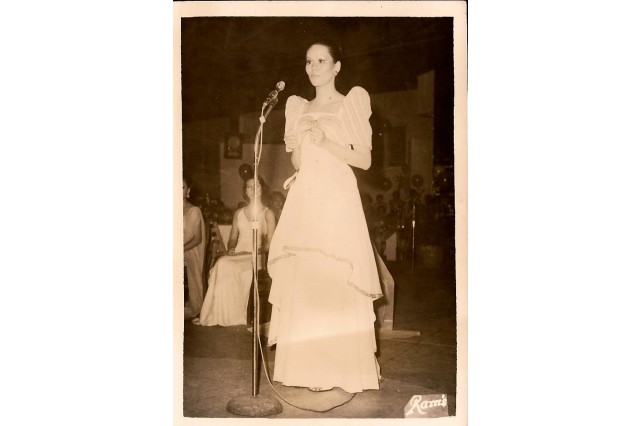
Courtesy of Carlyle Nuera
In 1976, Carlyle's mother, Ruby, competed and won the title of Miss Tacloban in the Philippines. The beautiful butterfly sleeve pictured here is a hint of the design for Mutya Barbie.
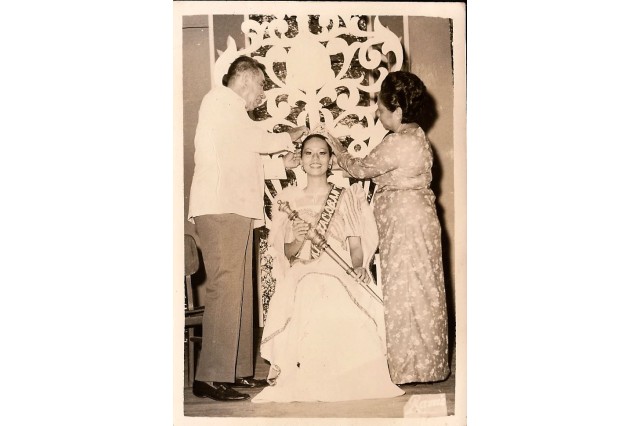
Courtesy of Carlyle Nuera
1 of 1
Nuera brought his own cultural heritage as a Filipino-American into the design of Mutya Barbie. Mutya is a Filipina girl's name and can mean muse or pearl.
Courtesy of Carlyle Nuera, Mattel
Courtesy of Carlyle Nuera, Mattel
"You can see a print on the organza has a sun. That is the sun from the flag of the Philippines. I added any kind of detail or opportunity to imbue Filipinoness into this doll." - Carlyle Nuera.
Natural History Museum of Los Angeles County
The sampaguita, a jasmine flower, the national flower of the Philippines, inspired the gown's hem on Mutya Barbie.
Natural History Museum of Los Angeles County
In 1976, Carlyle's mother, Ruby, competed and won the title of Miss Tacloban in the Philippines. The beautiful butterfly sleeve pictured here is a hint of the design for Mutya Barbie.
Courtesy of Carlyle Nuera
Courtesy of Carlyle Nuera
The Museum cares for a vast toy collection, which includes a variety of Barbies from nearly every decade that shows the connection between pop culture, fashion, and the evolution of Barbie design. Below is a small sampling of Barbie dolls in the Museum collection.
Natural History Museums of Los Angeles County, History Department (Material Culture)
This Barbie doll, part of the Museum’s collection, is the third series of the original Barbie doll. Barbie debuted on March 9, 1959, which is today celebrated as her birthday. The third series of dolls differed from the first two editions in having blue eyes with either blue or brown eyeliner, less of an arch in her eyebrows, white sunglasses with blue lenses, and black open-toe heels. They also came with the option of gold hoops or pearl stud earrings.
Natural History Museums of Los Angeles County, History Department (Material Culture)
Barbie always reflected the most cutting-edge style of the era. This brunette bubble-cut Barbie was a Jackie Kennedy look-alike inspired by the popularity of the First Lady. A fashion icon herself, Jackie Kennedy Onassis's wardrobe directly inspired Barbie’s earliest wardrobe pieces.
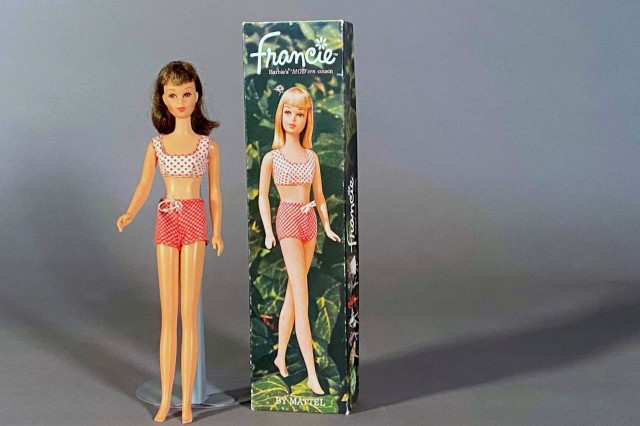
Natural History Museums of Los Angeles County, History Department (Material Culture)
Barbie’s cousin Francie was introduced in 1966 in response to the British Invasion. Shorter and with a waif-like figure, Francie could not fit into Barbie’s clothes. Mattel released a clothing line specifically designed for Francie that was inspired by Twiggy, a British fashion icon of the 1960s. Francie’s mod-era clothing was so popular Mattel eventually introduced a mod-era fashion line for Barbie’s body type as well.
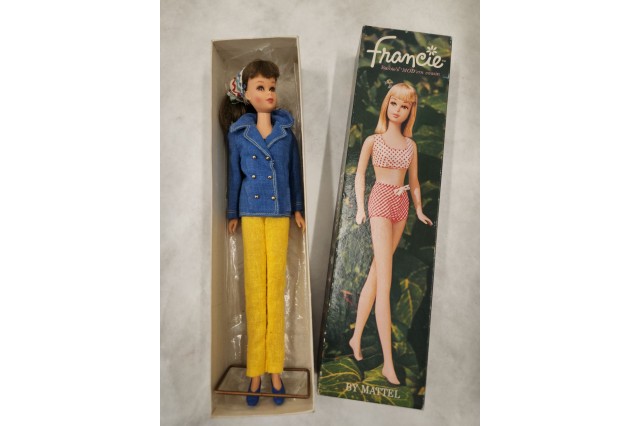
Natural History Museums of Los Angeles County, History Department (Material Culture)
When Natural History Museum’s Research and Collection staff first unboxed this donated Francie doll, she was wearing an unexpected outfit. The yellow pants and denim jacket ensemble were authentic Francie clothes; however, the headscarf was not. This is evidence that this Francie doll was loved and played with by its original owner.
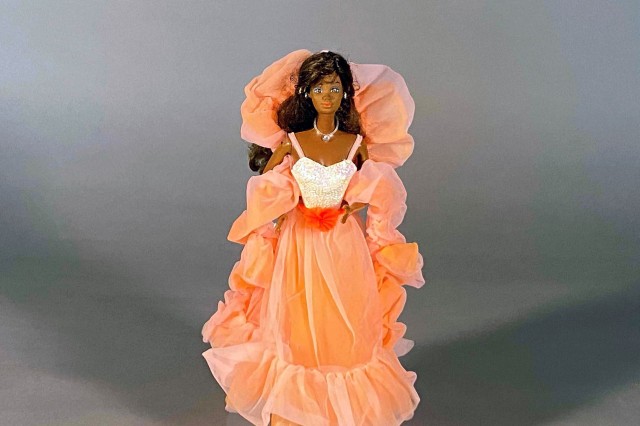
Natural History Museums of Los Angeles County, History Department (Material Culture)
Beginning in the 1980’s Mattel began issuing themed Barbie dolls. Up until this point, consumers would typically purchase a Barbie doll and over time add to their wardrobe collection through additional purchases. The Peaches ‘N Cream Barbie doll of 1985 was one of Mattel’s first themed Barbies. Her typically 80’s white and peach gown can be seen as a transition period for Barbie, opening the door to designer and collectible dolls.
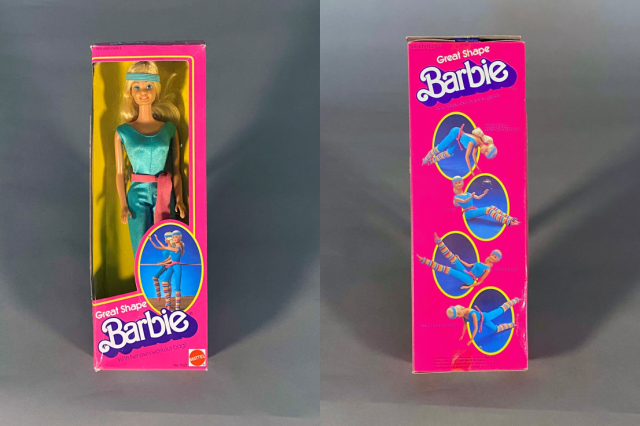
Natural History Museums of Los Angeles County, History Department (Material Culture)
The 1980s aerobics craze is attributed to Jane Fonda’s workout videos released in 1982. Fitness had a major impact on pop culture and the fashion industry. As always, Barbie finds her place among the latest trends in Great Shape Barbie released in 1984.
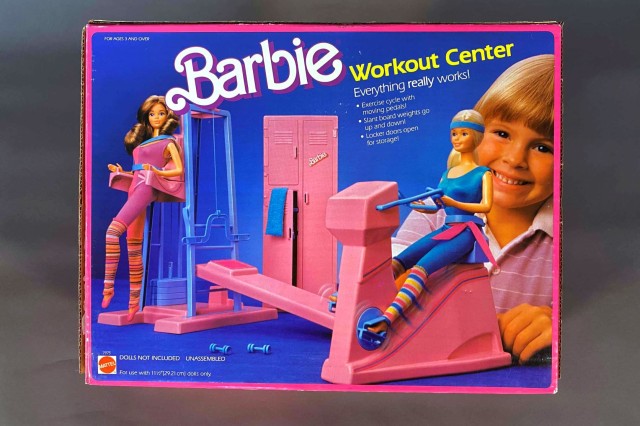
Natural History Museums of Los Angeles County, History Department (Material Culture)
Barbie’s workout clothes appear to be inspired by Olivia Newton John’s music video for Let’s Get Physical. Taking place in a gym, Mattel released a Workout Center for their Great Shape dolls allowing children to interpret and process the grown-up world around them through play.
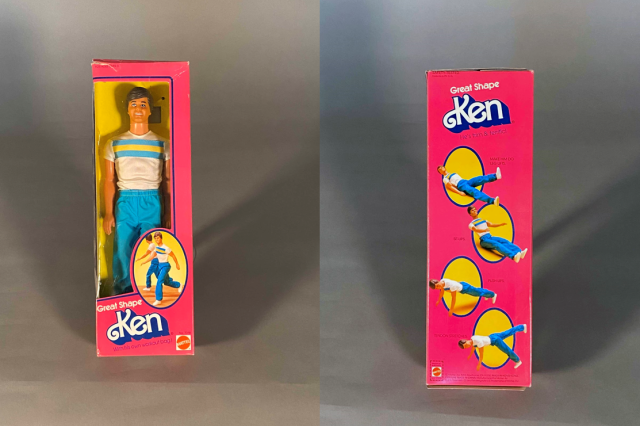
Natural History Museums of Los Angeles County, History Department (Material Culture)
Barbie’s boyfriend Ken exercises alongside her in the 1980s Great Shape line. The back of the box shows off examples of the types of workout movements Ken can do.
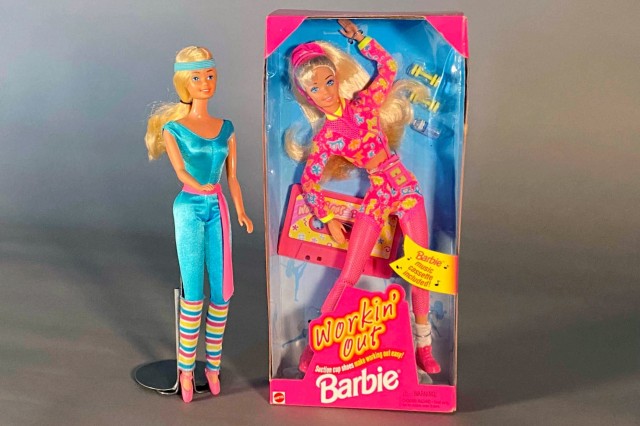
Natural History Museums of Los Angeles County, History Department (Material Culture)
Barbie is undoubtedly a fashion icon. Here you can see how her workout style shifted from the 80s to the 90s. Unlike her 80s counterpart, Workin’ Out Barbie comes with her own walkman and cassette tape inside. Wonder what type of music Barbie listened to in the 90s? Mattel included a cassette tape with this doll so that Barbie fans could work out to the same tune as their doll.
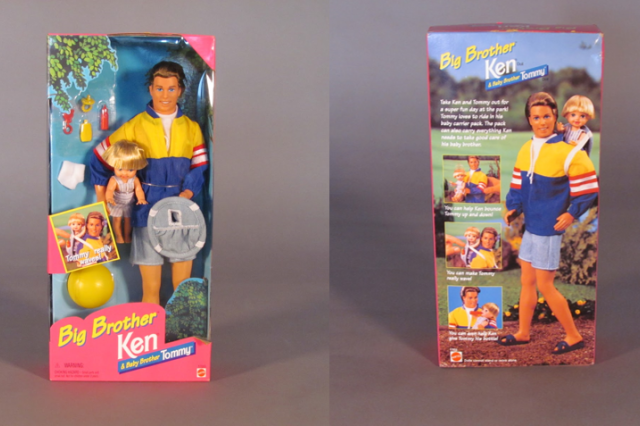
Natural History Museums of Los Angeles County, History Department (Material Culture)
As Barbie adapts and changes with time, Ken does too. Big Brother Ken illustrates a shift in cultural norms showing young people how men can have caretaker roles too.
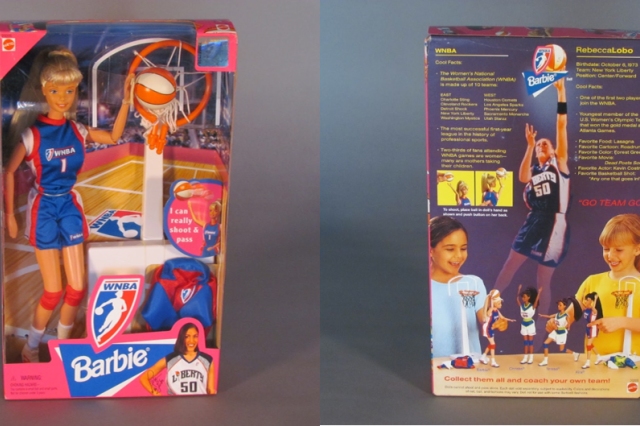
Mattel collaborated with the WNBA in the release of this doll, which highlights the career of Rebecca Lobo, the second person who signed up with the WNBA. The inclusion of Rebecca Lobo in this doll’s box introduces a real-life role model for young people. Barbie can be anything!
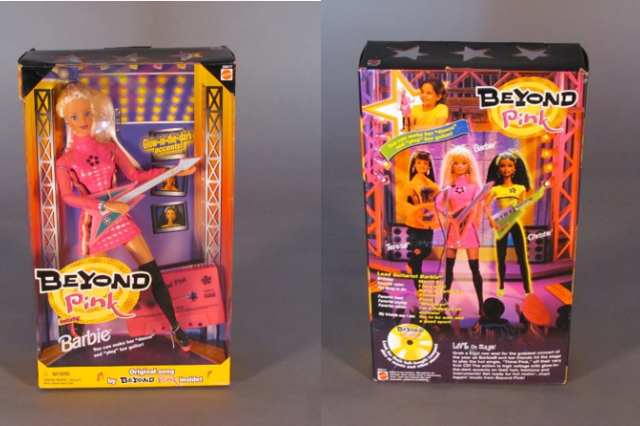
Natural History Museums of Los Angeles County, History Department (Material Culture)
In response to 1990s girl bands such as Spice Girls, Destiny’s Child, and TLC, Barbie came out with her own girl band, Beyond Pink. The Barbie, Teresa, and Christie dolls in this series each came with a cassette tape so children could play along to their hit song, Think Pink!
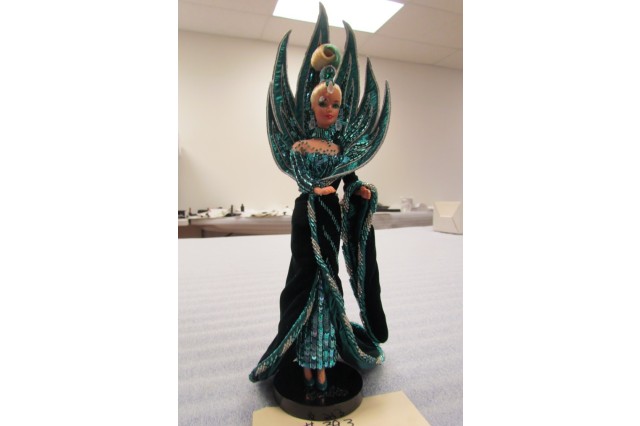
Natural History Museums of Los Angeles County, History Department (Material Culture)
American fashion designer Bob Mackie is best known for creating glamorous ensembles for stars like Cher, Carol Burnett, Diahann Carrol, and, of course, Barbie. This Neptune Fantasy Barbie doll designed by Bob Mackie was recently accessioned into NHM’s collection. The donor did their best to care for their collection. However, plastics are not chemically stable compounds, and fluctuations in temperature caused a piece of packaging to stick to this doll’s face. At NHM, after object conservators carefully remove the residue, this doll will be relocated to a climate-controlled collection storage space that very few collectors would have the capacity to provide.
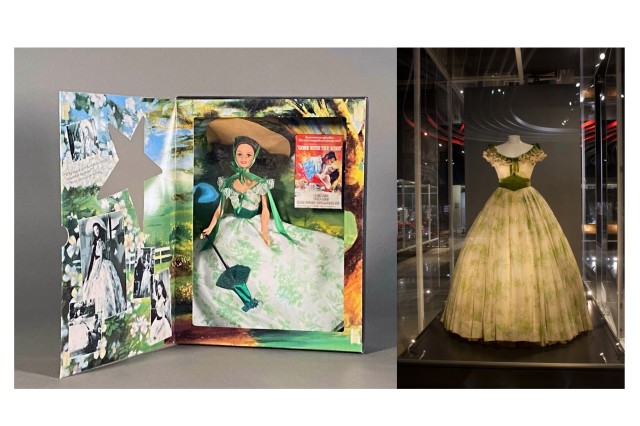
Natural History Museum of Los Angeles County, History Department (Material Culture)
The Museum cares for an extensive collection of early Hollywood history, including the BBQ dress Vivien Leigh wore in 1939’s Gone with the Wind. Mattel released a series of Barbies highlighting the film’s elaborate costume design. During the making of this particular Barbie, lead designers at Mattel visited the Museum’s collection center to study the intricate fabric of the original costume to create a Barbie-scale replica. The lengths that Mattel went to to ensure the authenticity of this doll is a testament to the undeniable cultural significance this film continues to have on society despite its controversial history.
1 of 1
This Barbie doll, part of the Museum’s collection, is the third series of the original Barbie doll. Barbie debuted on March 9, 1959, which is today celebrated as her birthday. The third series of dolls differed from the first two editions in having blue eyes with either blue or brown eyeliner, less of an arch in her eyebrows, white sunglasses with blue lenses, and black open-toe heels. They also came with the option of gold hoops or pearl stud earrings.
Natural History Museums of Los Angeles County, History Department (Material Culture)
Barbie always reflected the most cutting-edge style of the era. This brunette bubble-cut Barbie was a Jackie Kennedy look-alike inspired by the popularity of the First Lady. A fashion icon herself, Jackie Kennedy Onassis's wardrobe directly inspired Barbie’s earliest wardrobe pieces.
Natural History Museums of Los Angeles County, History Department (Material Culture)
Barbie’s cousin Francie was introduced in 1966 in response to the British Invasion. Shorter and with a waif-like figure, Francie could not fit into Barbie’s clothes. Mattel released a clothing line specifically designed for Francie that was inspired by Twiggy, a British fashion icon of the 1960s. Francie’s mod-era clothing was so popular Mattel eventually introduced a mod-era fashion line for Barbie’s body type as well.
Natural History Museums of Los Angeles County, History Department (Material Culture)
When Natural History Museum’s Research and Collection staff first unboxed this donated Francie doll, she was wearing an unexpected outfit. The yellow pants and denim jacket ensemble were authentic Francie clothes; however, the headscarf was not. This is evidence that this Francie doll was loved and played with by its original owner.
Natural History Museums of Los Angeles County, History Department (Material Culture)
Beginning in the 1980’s Mattel began issuing themed Barbie dolls. Up until this point, consumers would typically purchase a Barbie doll and over time add to their wardrobe collection through additional purchases. The Peaches ‘N Cream Barbie doll of 1985 was one of Mattel’s first themed Barbies. Her typically 80’s white and peach gown can be seen as a transition period for Barbie, opening the door to designer and collectible dolls.
Natural History Museums of Los Angeles County, History Department (Material Culture)
The 1980s aerobics craze is attributed to Jane Fonda’s workout videos released in 1982. Fitness had a major impact on pop culture and the fashion industry. As always, Barbie finds her place among the latest trends in Great Shape Barbie released in 1984.
Natural History Museums of Los Angeles County, History Department (Material Culture)
Barbie’s workout clothes appear to be inspired by Olivia Newton John’s music video for Let’s Get Physical. Taking place in a gym, Mattel released a Workout Center for their Great Shape dolls allowing children to interpret and process the grown-up world around them through play.
Natural History Museums of Los Angeles County, History Department (Material Culture)
Barbie’s boyfriend Ken exercises alongside her in the 1980s Great Shape line. The back of the box shows off examples of the types of workout movements Ken can do.
Natural History Museums of Los Angeles County, History Department (Material Culture)
Barbie is undoubtedly a fashion icon. Here you can see how her workout style shifted from the 80s to the 90s. Unlike her 80s counterpart, Workin’ Out Barbie comes with her own walkman and cassette tape inside. Wonder what type of music Barbie listened to in the 90s? Mattel included a cassette tape with this doll so that Barbie fans could work out to the same tune as their doll.
Natural History Museums of Los Angeles County, History Department (Material Culture)
As Barbie adapts and changes with time, Ken does too. Big Brother Ken illustrates a shift in cultural norms showing young people how men can have caretaker roles too.
Natural History Museums of Los Angeles County, History Department (Material Culture)
Mattel collaborated with the WNBA in the release of this doll, which highlights the career of Rebecca Lobo, the second person who signed up with the WNBA. The inclusion of Rebecca Lobo in this doll’s box introduces a real-life role model for young people. Barbie can be anything!
In response to 1990s girl bands such as Spice Girls, Destiny’s Child, and TLC, Barbie came out with her own girl band, Beyond Pink. The Barbie, Teresa, and Christie dolls in this series each came with a cassette tape so children could play along to their hit song, Think Pink!
Natural History Museums of Los Angeles County, History Department (Material Culture)
American fashion designer Bob Mackie is best known for creating glamorous ensembles for stars like Cher, Carol Burnett, Diahann Carrol, and, of course, Barbie. This Neptune Fantasy Barbie doll designed by Bob Mackie was recently accessioned into NHM’s collection. The donor did their best to care for their collection. However, plastics are not chemically stable compounds, and fluctuations in temperature caused a piece of packaging to stick to this doll’s face. At NHM, after object conservators carefully remove the residue, this doll will be relocated to a climate-controlled collection storage space that very few collectors would have the capacity to provide.
Natural History Museums of Los Angeles County, History Department (Material Culture)
The Museum cares for an extensive collection of early Hollywood history, including the BBQ dress Vivien Leigh wore in 1939’s Gone with the Wind. Mattel released a series of Barbies highlighting the film’s elaborate costume design. During the making of this particular Barbie, lead designers at Mattel visited the Museum’s collection center to study the intricate fabric of the original costume to create a Barbie-scale replica. The lengths that Mattel went to to ensure the authenticity of this doll is a testament to the undeniable cultural significance this film continues to have on society despite its controversial history.
Natural History Museum of Los Angeles County, History Department (Material Culture)
The L.A. at Play story is not complete without you! Share your creature, doll, or figurine story and follow the stories of the makers who are contributing to some of L.A.'s most iconic fandoms. Tag us @NHMLA with #LAatPlay.
Explore More Stories of Dolls, & Figurines